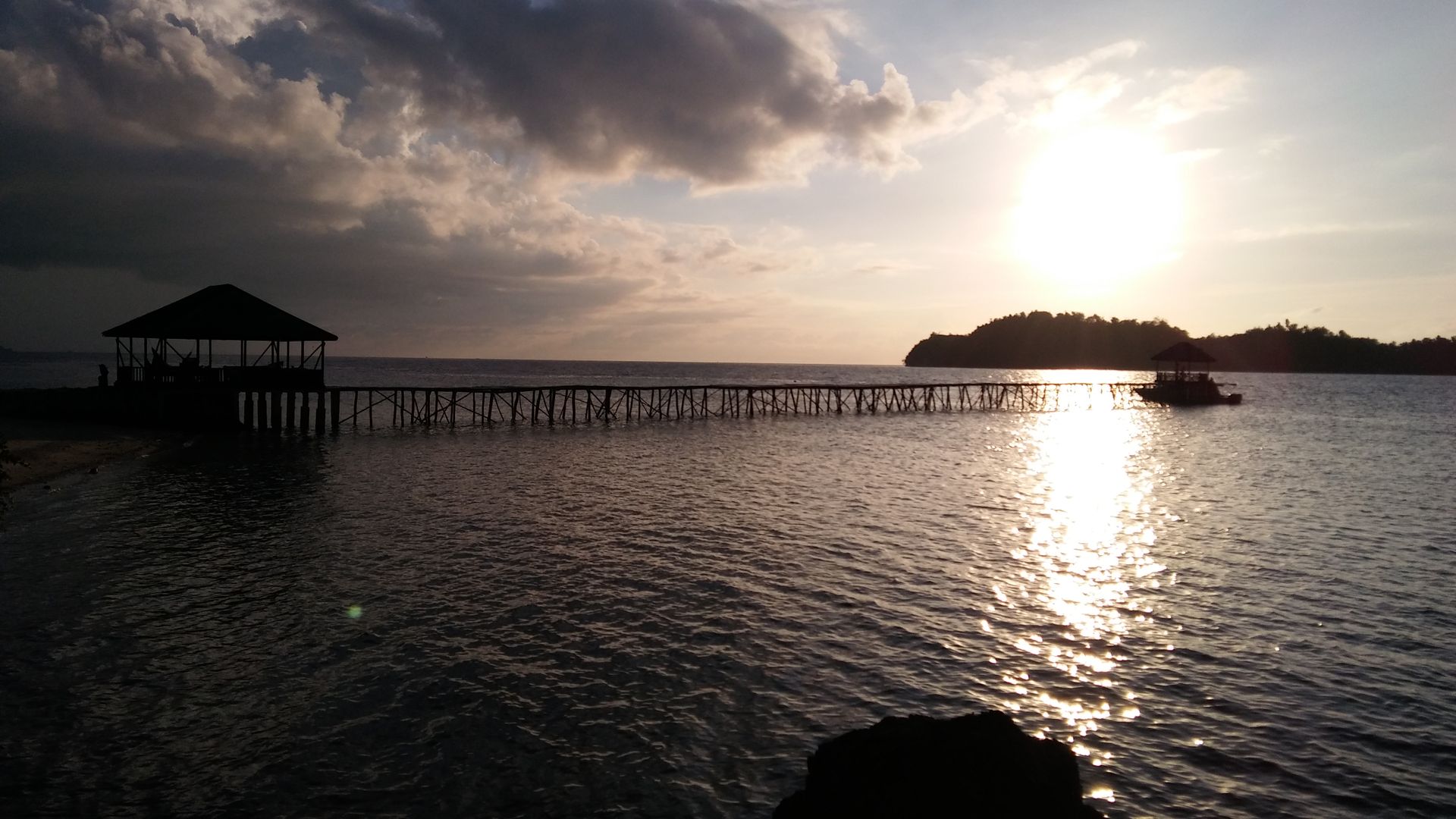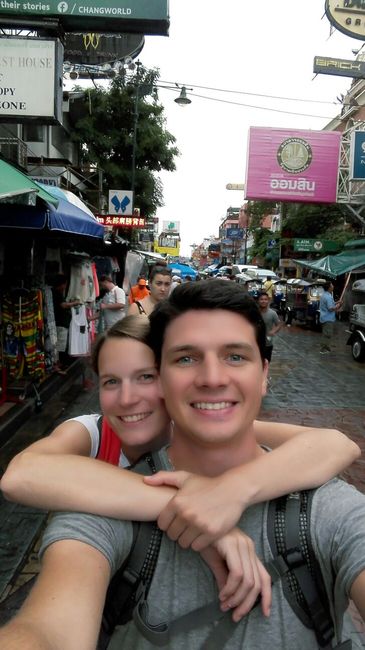
wir.sind. dann.mal. weg
vakantio.de/lisaandmatthiasgowild
Arequipa & Canyon de Colca
Naipablaak: 06.09.2022
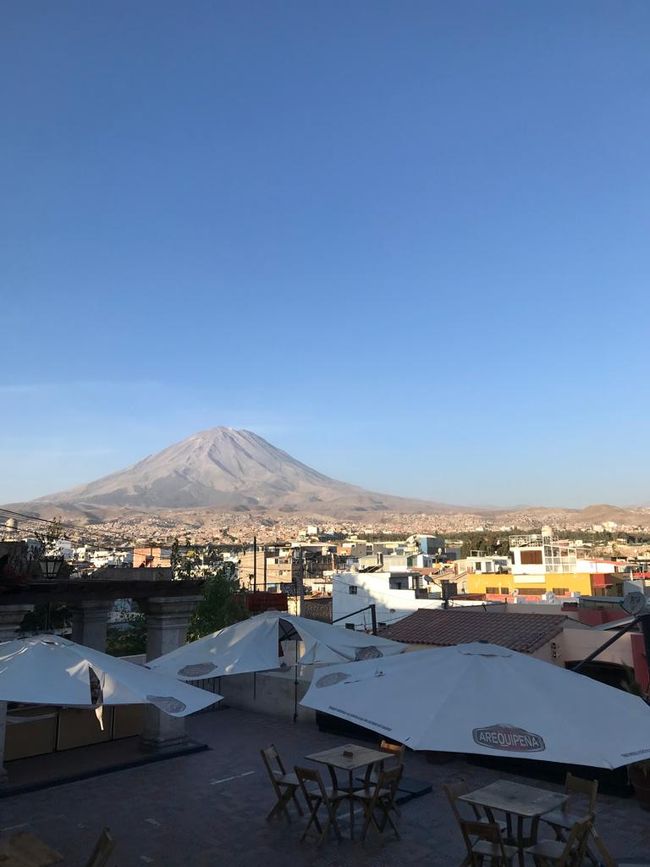
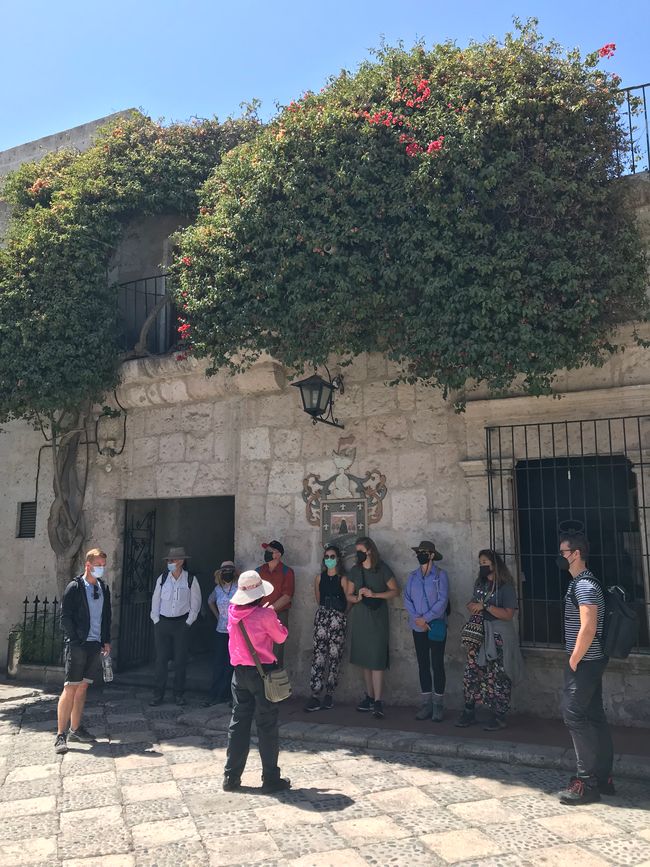
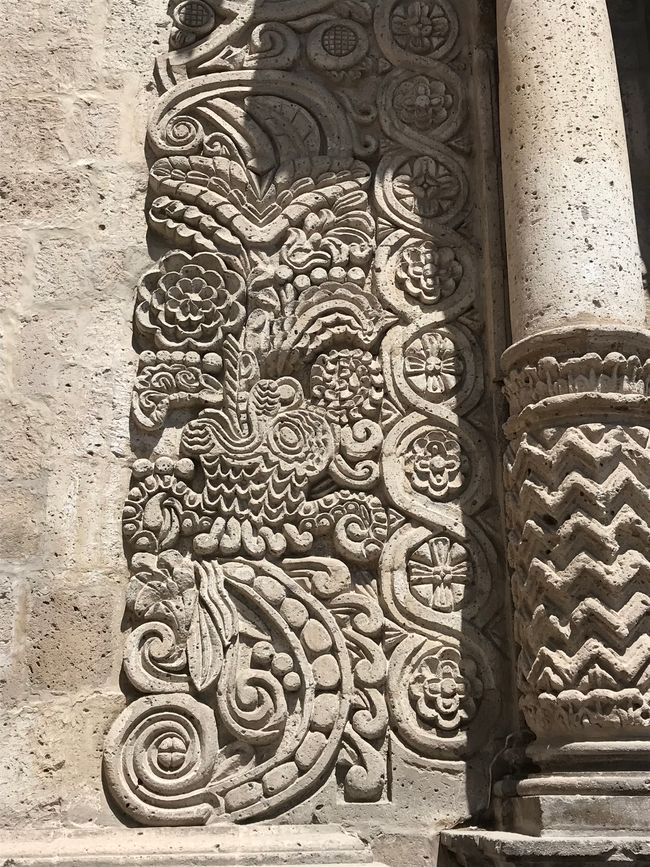
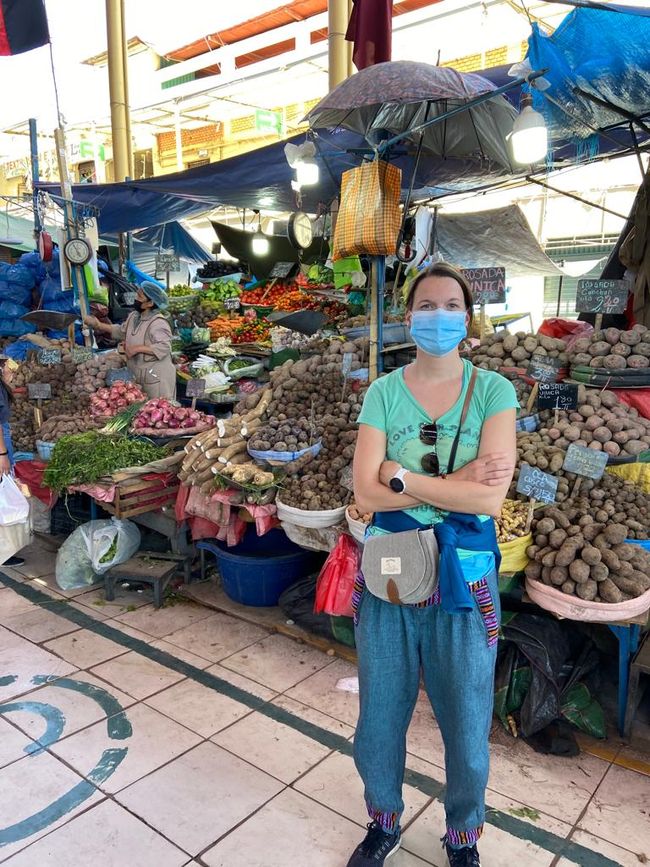
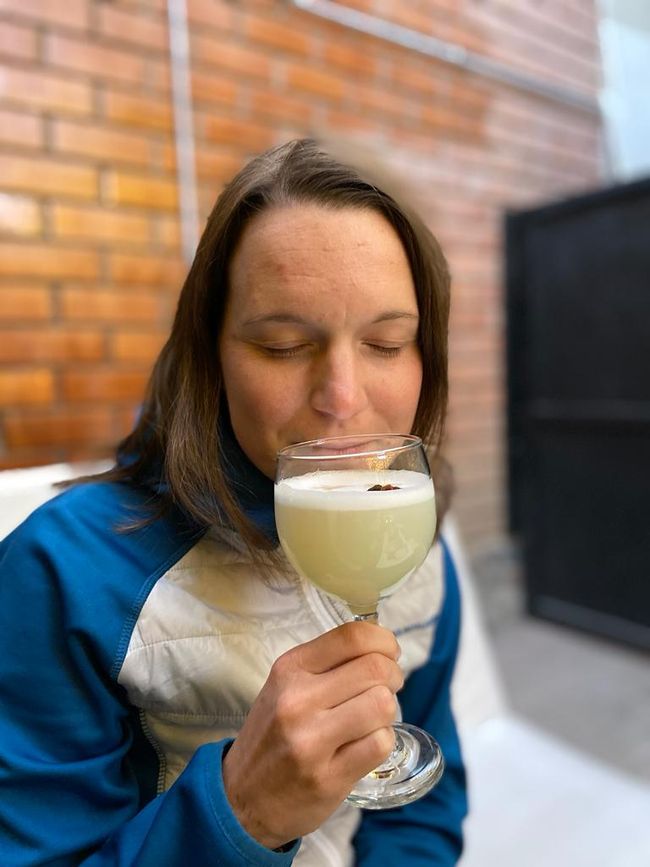
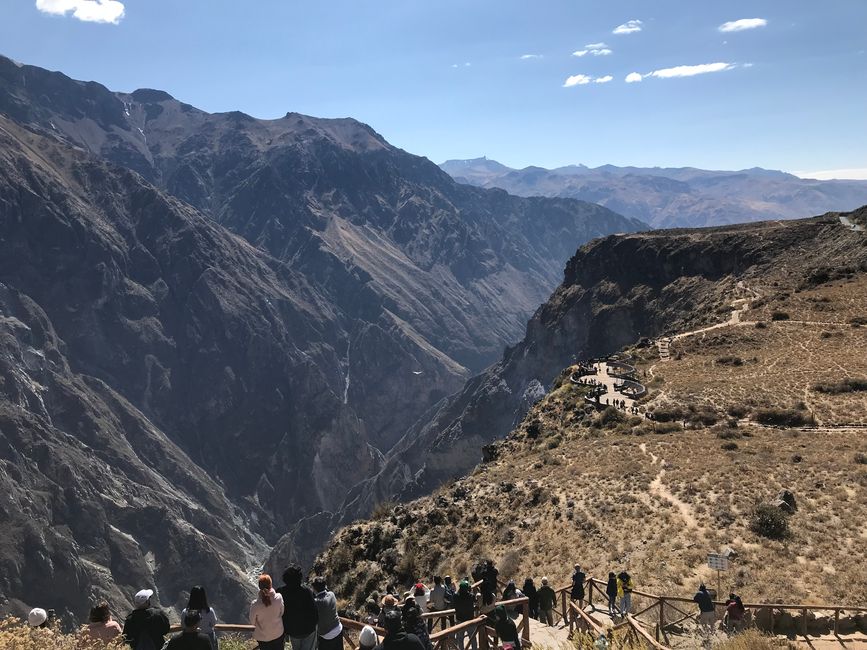
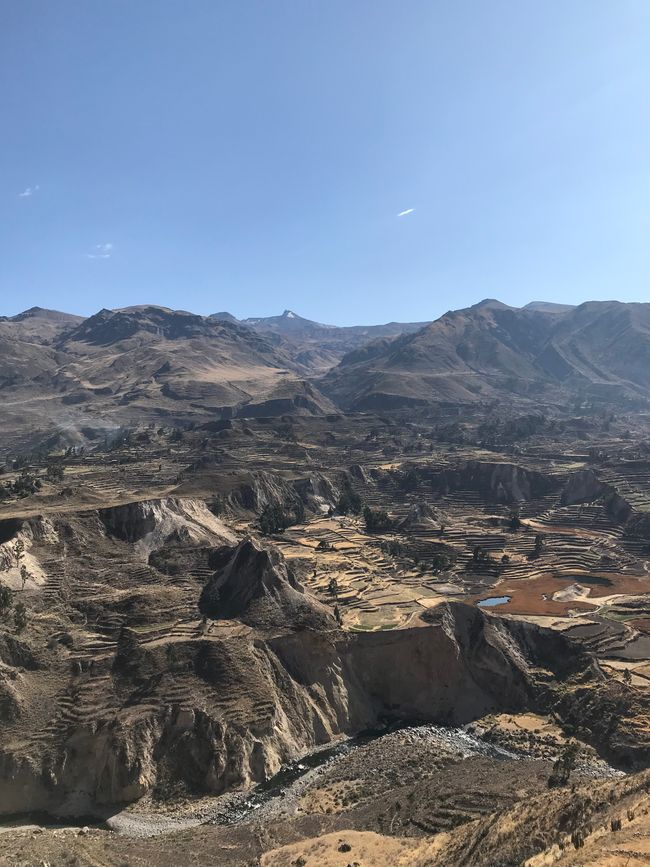
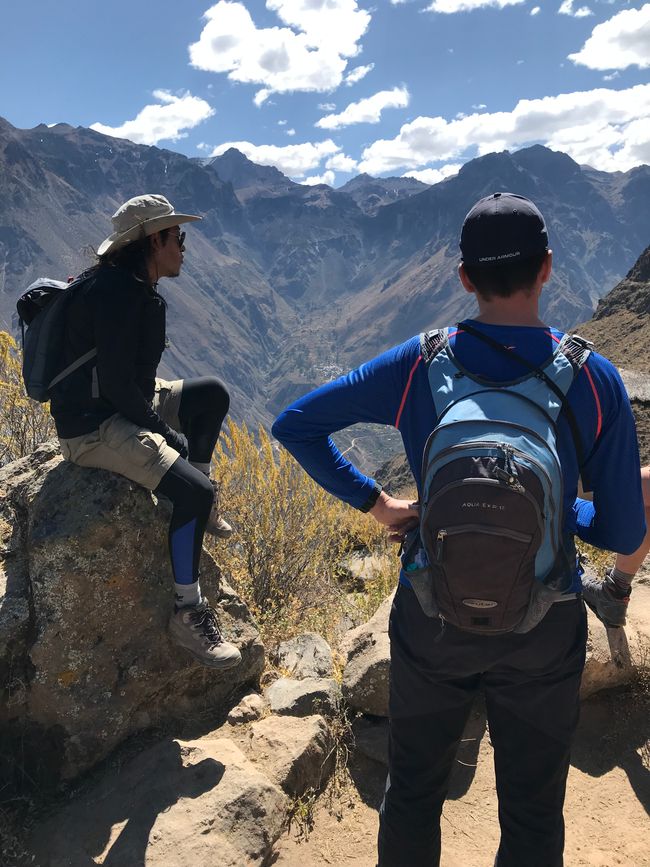
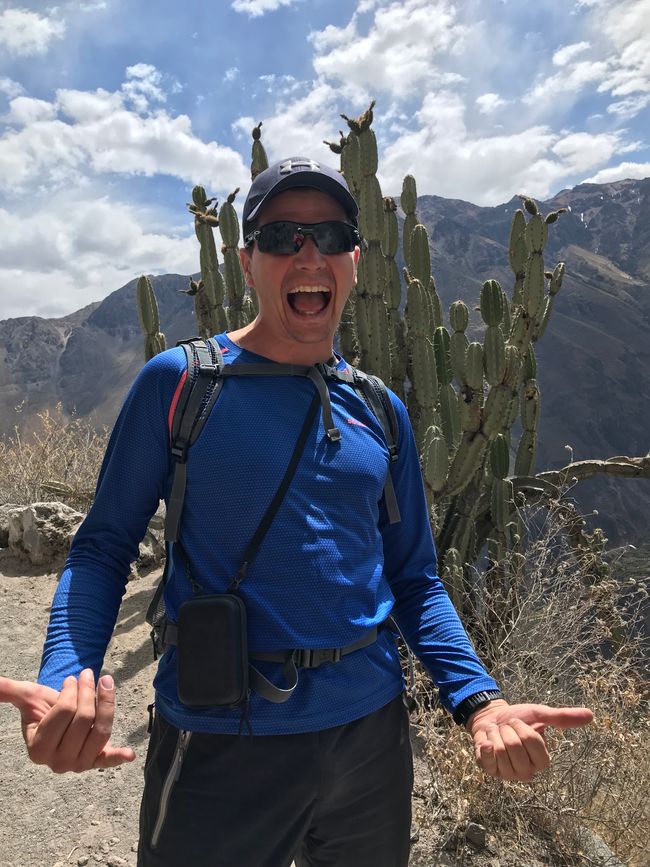
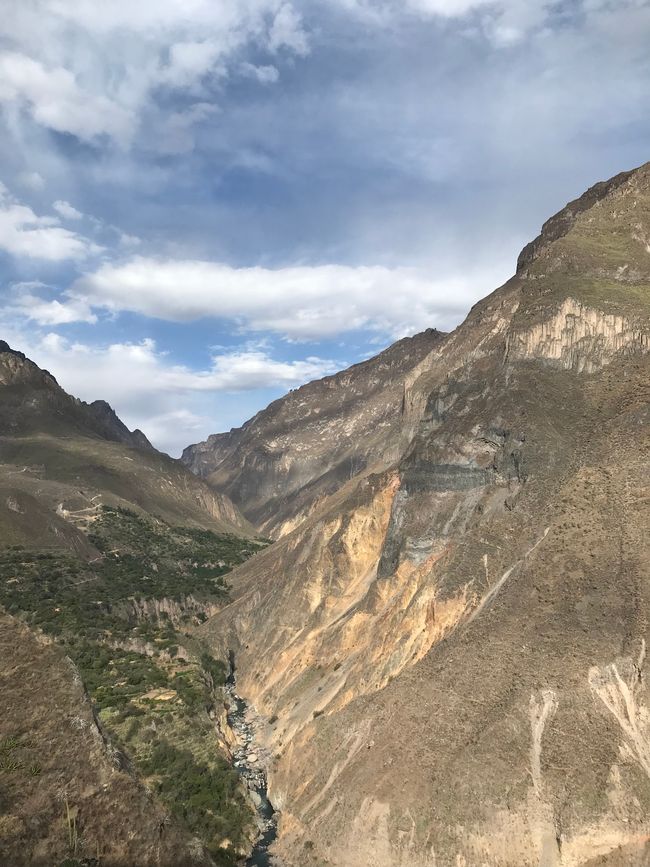
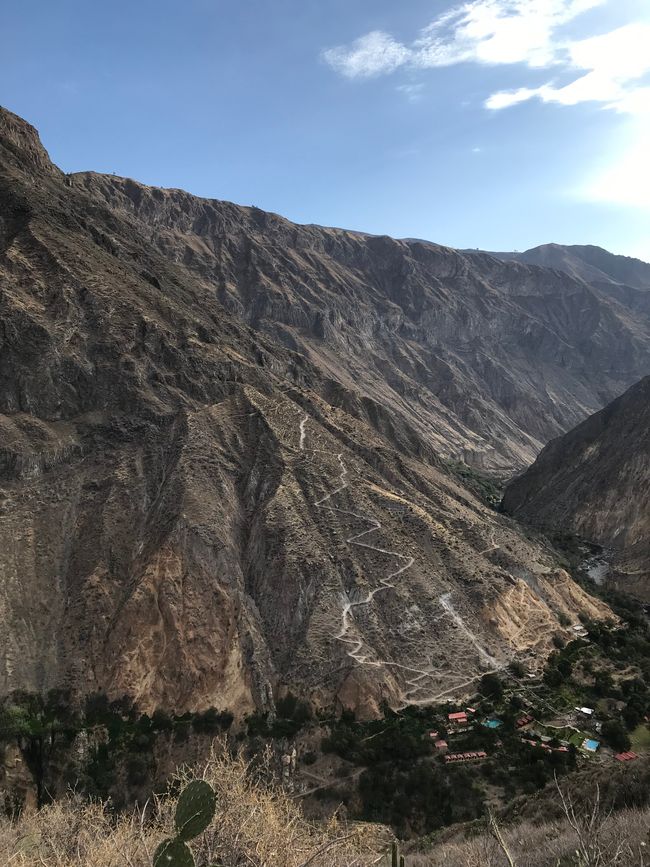
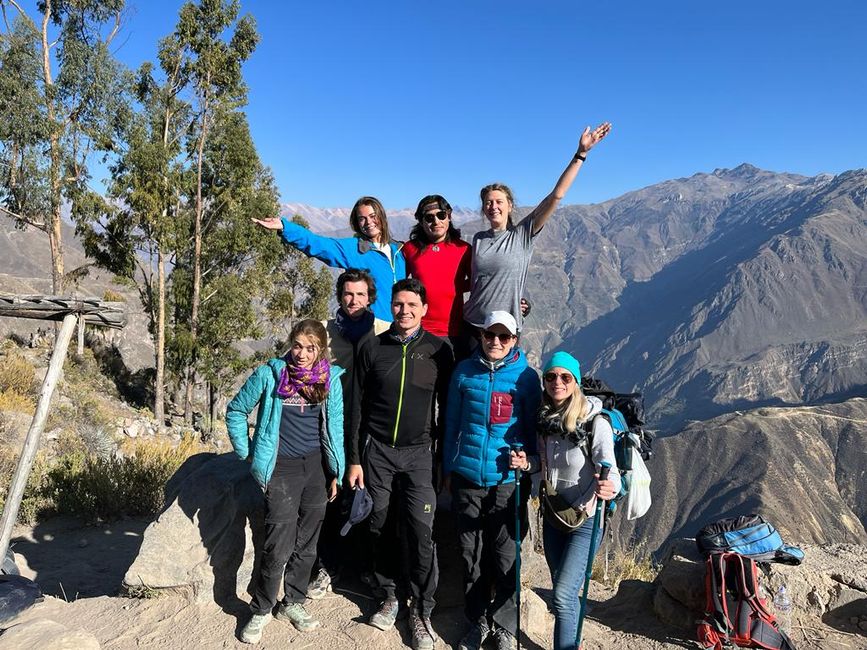
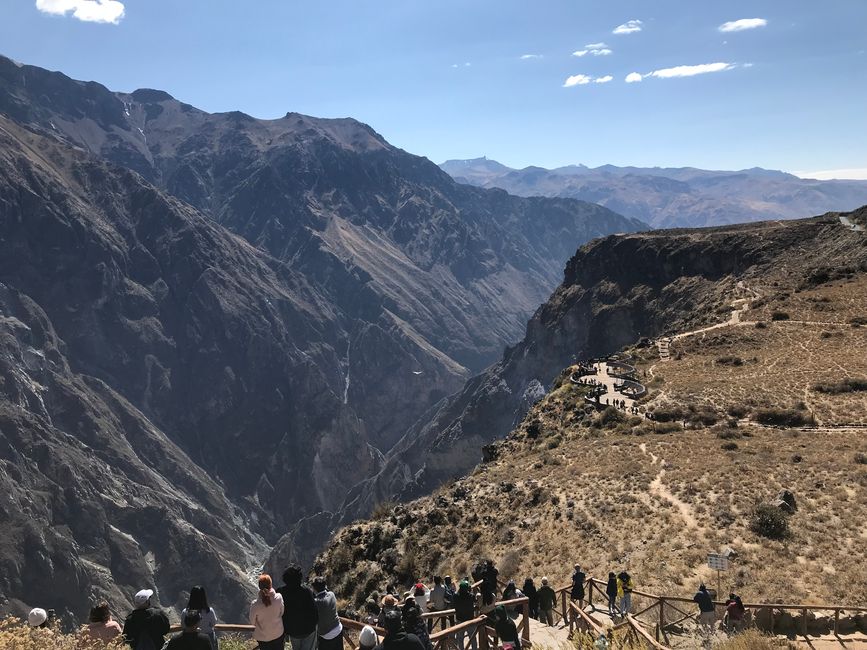
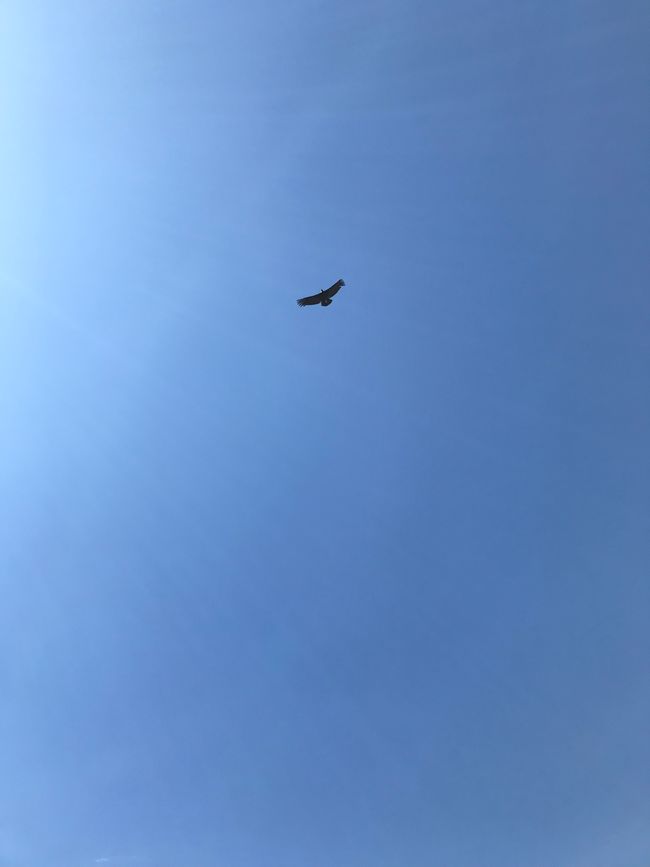

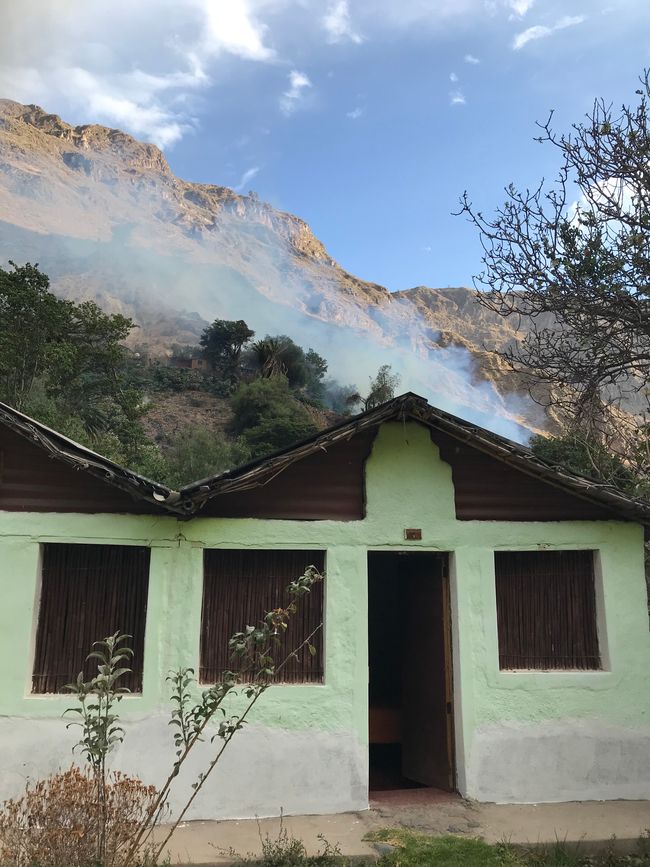
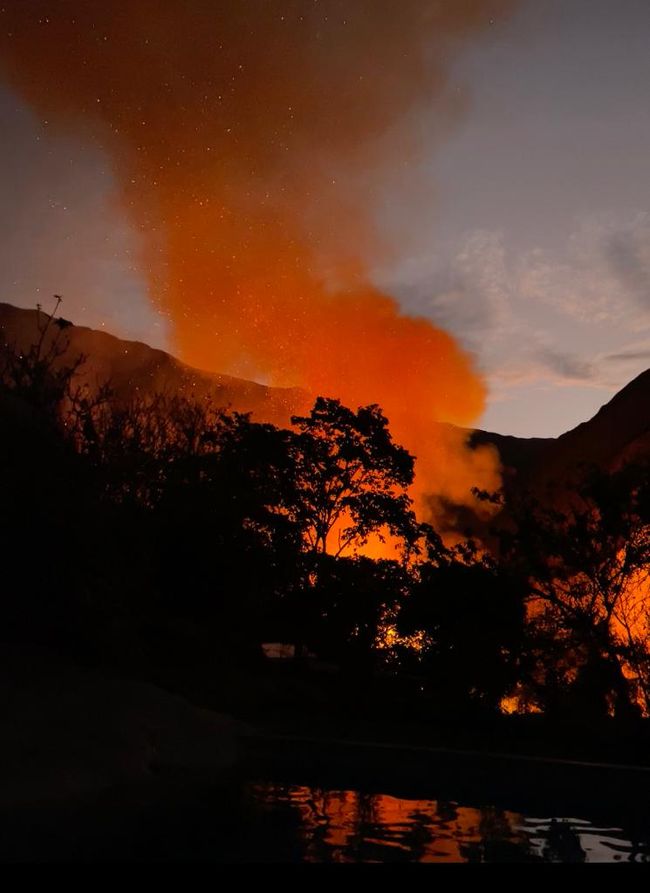
Agsubscribe iti Newsletter
Hello friends :)
After the backpacker paradise of Huacachina, we took our first overnight bus of the trip to Arequipa. A city located at 2,300m surrounded by 3 volcanoes, one of them being "El Misti" which is still active.

Before embarking on our first trekking tour in the Andes, we explored the city a bit, took a city tour, and slowly acclimated to the thin air accompanied by the history of Peru.




Then we headed to the "2 day, 1 night adventure" in the Colca Canyon. We didn't know how big this adventure would be yet, but let's go step by step.
Pick-up at 3:00 am, three hours by bus to Chivay, breakfast, photo stop for condor watching, start trekking at 9:30. So far, everything was easy...


The population in the Colca Valley mainly lives off the fertile soil and the resulting food production, as well as working in silver mines.




The Andean condor can grow up to 2 meters tall, weigh up to 20kg, and has a wingspan of up to 3 meters - a mighty glider of the air.
Us hikers then had a 1,200m descent and 14km trek into the canyon - scorching hot, challenging for thighs, calves, and knees, but breathtakingly beautiful.
After 6 hours (including a relaxing lunch - traditionally in Peru always with plenty of carbohydrates like rice and potatoes) we arrived exhausted but happy at our camp for the night.

If you're now wondering, "Hmm - looks like fire in the background!?", then you probably had the same thought as us. And yes, it was fire. However, both the villagers and the guides assured us when asked that the fire was only "pequeño" and "muy lejos". After a short time, the smoke became denser and the flames became visible - right behind the small straw-roofed hut where we were supposed to spend the night. One of the other groups then had a Spanish participant, who is a firefighter by profession, and he was very concerned and turned to the guides again, but they waved it off again and insisted that we should rest and not worry. At this point, we were getting a bit uneasy and decided to pack up all our belongings as a precaution and closely watch the worried expressions on the firefighter's faces. Suddenly, everything happened very quickly and our entire group left the camp in the darkness towards a small bridge over a river. Even though the guides still tried to reassure us and convince us to stay, we trusted the expertise of the firefighter who instructed us to put on our masks and leave the valley as quickly as possible.

After crossing the bridge, the chaos eased a bit. But the guides could no longer hide the seriousness of the situation. They stayed back at the camp and tried to extinguish the fire together with the villagers - their survival was now at stake. In the meantime, we remained in the darkness in a canyon over 1,200m deep, weighing our options. Returning to the originally planned camp was not imaginable at this point, sleeping outside was possible but with a high risk of freezing. We were at a loss for 2 hours and prepared for the night climb. But then the smoke diminished, the flames were extinguished, and for the moment we were able to return to the camp and would decide whether to stay after dinner. After persuading the guides to organize a night watch for any rekindling embers, we agreed to spend the night in the camp after all. Honestly, we didn't get much sleep and at 4:00 am we had to start the ascent again before the sun heated up the canyon.
Relieved that everything turned out well in the end and no one was harmed, we were able to enjoy the first rays of sunshine back at 3,300m.

Currently, we are in Cusco and preparing for the next trek to Machu Picchu over 4 days and the Salkantay Mountain (4,600m). We hope for a similarly cool adventure - just this time without any unplanned nocturnal excursions.
We will soon share how we have been and what we have learned about the history of Peru in Cusco.
See you soon & lots of kisses
Lisa & Matthias
Agsubscribe iti Newsletter
Sungbat

Dagiti report ti panagbiahe Peru nga
